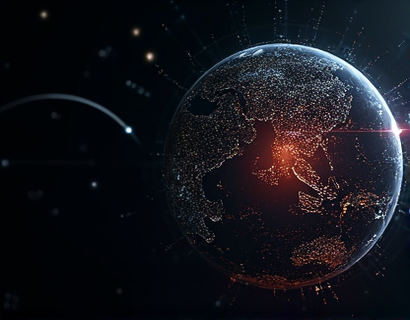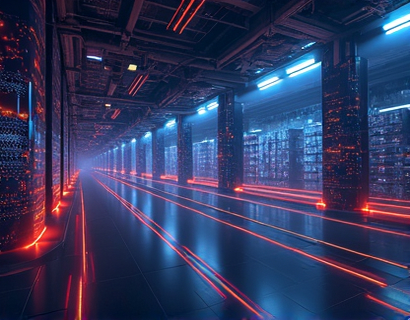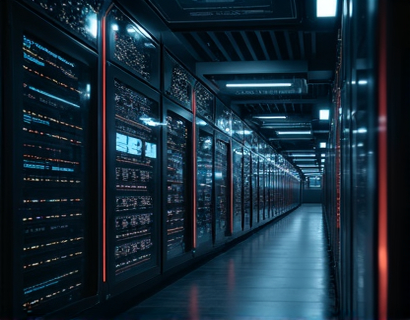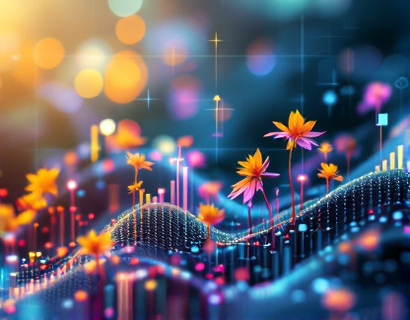Elevate Your Aquaculture Business with Advanced Software Solutions
In the rapidly evolving world of aquaculture, business owners and managers face numerous challenges that can impact the success and sustainability of their operations. From managing complex logistics and resource allocation to ensuring compliance with regulatory standards, the demands are substantial. Advanced software solutions are revolutionizing the industry by providing essential tools that streamline operations, boost productivity, and optimize resource management. These technologies are not just beneficial; they are now indispensable for any aquaculture business aiming to remain competitive and thrive in a market characterized by increasing complexity and scrutiny.
Streamlining Operations
One of the primary advantages of implementing advanced software solutions in aquaculture is the significant improvement in operational efficiency. These systems automate routine tasks, reducing the need for manual intervention and minimizing human error. For instance, automated feeding systems can be programmed to deliver precise amounts of feed at optimal times, ensuring that fish receive the right nutrition without waste. Similarly, water quality monitoring systems continuously track parameters such as pH, temperature, and oxygen levels, alerting managers to any deviations that could affect fish health.
In addition to automation, these software solutions provide comprehensive dashboards that offer real-time insights into various aspects of the operation. Managers can monitor production metrics, inventory levels, and financial performance all from a single interface. This centralized view enables quicker decision-making and more effective problem-solving, as issues can be identified and addressed promptly. For example, if the software detects a sudden drop in water quality, it can trigger an alert, allowing immediate action to be taken to rectify the situation.
Enhancing Productivity
Productivity is a critical factor in the success of any aquaculture business. Advanced software solutions are designed to maximize output while minimizing input costs. By optimizing feeding schedules, for instance, these systems ensure that fish are fed only when necessary, reducing feed waste and lowering costs. Moreover, predictive analytics can forecast growth rates and market demands, enabling businesses to plan their production cycles more effectively. This foresight helps in aligning supply with market needs, reducing the risk of overproduction or stockouts.
Labor management is another area where software solutions excel. Scheduling tools can optimize staff assignments based on workload and availability, ensuring that the right number of personnel are on duty at the right times. This not only improves operational efficiency but also enhances employee satisfaction by reducing overwork and burnout. Furthermore, performance tracking features allow managers to monitor employee productivity and provide targeted feedback, fostering a culture of continuous improvement.
Optimizing Resource Management
Resource management is a cornerstone of sustainable aquaculture. Advanced software solutions play a pivotal role in optimizing the use of water, energy, and other resources. Water management systems, for example, monitor and control water circulation and filtration processes, ensuring that water is used efficiently and maintained at optimal conditions for fish health. This not only conserves water but also reduces the environmental impact of the operation.
Energy consumption is another critical aspect. Software can track and analyze energy usage patterns, identifying areas where efficiency can be improved. For instance, it can recommend optimal times for running pumps and other equipment based on energy tariffs, leading to significant cost savings. Additionally, these systems can integrate with renewable energy sources, such as solar panels, to further reduce reliance on non-renewable energy sources.
Ensuring Compliance and Sustainability
Compliance with environmental and regulatory standards is a mandatory requirement for aquaculture businesses. Advanced software solutions help ensure that operations remain within legal boundaries by providing tools for tracking and reporting. These systems can generate detailed reports on water quality, waste management, and other key metrics, making it easier to demonstrate compliance to regulatory bodies. This not only avoids potential fines and penalties but also enhances the reputation of the business as a responsible and sustainable operator.
Sustainability is increasingly becoming a key differentiator in the market. Consumers and buyers are more conscious of the environmental impact of the products they purchase. Software solutions that support sustainable practices, such as integrated waste management and eco-friendly feed options, can help businesses meet these expectations. By leveraging data and analytics, companies can continuously improve their sustainability performance, attracting a growing segment of environmentally conscious consumers.
Integration and Scalability
The versatility of advanced software solutions is another significant advantage. These systems are designed to integrate seamlessly with existing infrastructure, whether it's hardware, other software platforms, or third-party services. This interoperability ensures a smooth transition and minimizes disruption to ongoing operations. For businesses that plan to expand or diversify their operations, scalable software solutions provide the flexibility to grow without the need for extensive reconfiguration.
Cloud-based solutions, in particular, offer scalability and accessibility. Data is stored securely off-site, allowing access from anywhere with an internet connection. This is particularly beneficial for businesses with multiple locations or those that operate in remote areas. Real-time data access enables managers to make informed decisions regardless of their physical location, enhancing overall operational control.
Data-Driven Decision Making
One of the most transformative aspects of advanced software solutions in aquaculture is their ability to provide data-driven insights. By collecting and analyzing vast amounts of data, these systems offer valuable insights that can inform strategic decisions. For example, historical data on fish health, growth rates, and market trends can be analyzed to identify patterns and trends that might not be apparent through manual analysis.
Predictive modeling can forecast future scenarios based on current data, helping managers anticipate market changes and adjust their strategies accordingly. This proactive approach can lead to better resource allocation, improved financial performance, and a stronger market position. Data visualization tools within the software make it easier to interpret complex data sets, allowing even those without a technical background to gain valuable insights.
Case Studies and Success Stories
Numerous aquaculture businesses have already experienced the benefits of implementing advanced software solutions. For instance, a large-scale fish farm in Asia adopted an integrated management system that included automated feeding, water quality monitoring, and production tracking. The result was a 20% increase in productivity and a 15% reduction in feed costs within the first year. The real-time data and alerts enabled the farm to respond quickly to any issues, maintaining optimal conditions for fish health and growth.
Another example is a group of small-scale aquaculture operators in Europe who implemented a cloud-based solution to manage their collective resources. The software facilitated better coordination among the operators, leading to more efficient use of shared water resources and reduced environmental impact. The collective effort resulted in a 10% increase in overall production and a significant improvement in sustainability metrics.
Challenges and Considerations
While the benefits of advanced software solutions are clear, there are several challenges and considerations that aquaculture businesses should be aware of. Initial implementation costs can be a barrier, especially for smaller operations. However, the long-term savings and efficiency gains often outweigh these initial investments. It's essential to conduct a thorough cost-benefit analysis to ensure that the chosen solution aligns with the business's financial capabilities and strategic goals.
Another consideration is the need for training and support. Staff must be adequately trained to use the new systems effectively. Providers often offer comprehensive training programs and ongoing support to ensure a smooth transition. Additionally, choosing a reputable vendor with a track record of successful implementations can mitigate risks and ensure a positive outcome.
Future Trends in Aquaculture Software
The future of aquaculture software is promising, with several emerging trends set to further enhance the industry. Artificial intelligence and machine learning are likely to play a more significant role, enabling more sophisticated predictive analytics and automated decision-making. For example, AI can optimize feeding schedules based on real-time data on fish behavior and environmental conditions, leading to even greater efficiency.
Internet of Things (IoT) devices will continue to integrate with software solutions, providing more granular data and deeper insights. Sensors placed throughout the aquaculture facility can monitor a wide range of parameters, from water quality to fish movement, creating a comprehensive digital twin of the operation. This level of detail allows for hyper-personnalized management and proactive issue resolution.
Blockchain technology is another area with potential applications in aquaculture. It can enhance traceability and transparency in the supply chain, ensuring that products are authentic and sustainably sourced. Consumers increasingly demand transparency, and blockchain can provide the necessary assurance, further strengthening the market position of compliant businesses.
In conclusion, advanced software solutions are not just a luxury but a necessity for modern aquaculture businesses. These tools offer a multitude of benefits, from streamlining operations and enhancing productivity to optimizing resource management and ensuring compliance. As the industry continues to evolve, embracing these technologies will be crucial for staying competitive and sustainable in a rapidly changing market.










































